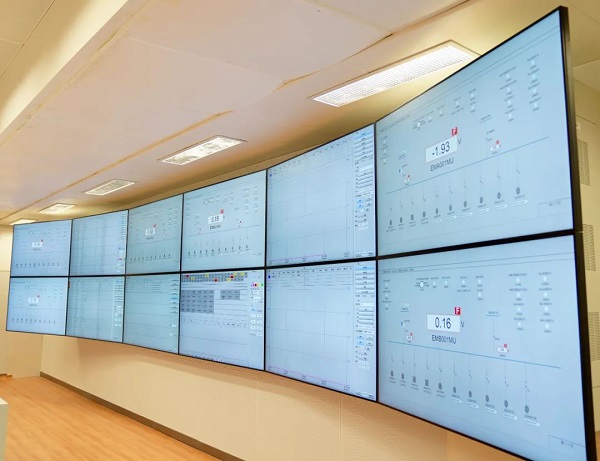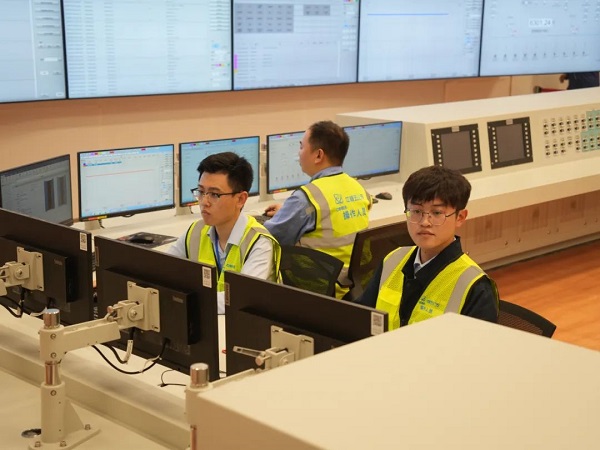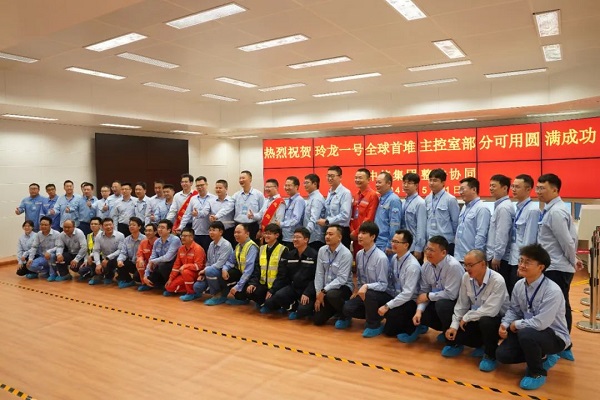Main Control Room of Linglong One Put into Operation
With the installation of the partial network of the DCS (digital control system) and the display of the first on-site measurement signal on the screen, the main control room of the Linglong One reactor was officially put into operation in Changjiang of South China's Hainan province at 8:38 a.m. on May 21.
The Linglong One is a demonstration project of the multiple-purpose small modular reactor invested and controlled by China National Nuclear Power Co., Ltd. (CNNP), a subsidiary of China National Nuclear Corporation (CNNC).
The main control room is the monitoring and control center for the systems and equipment of a nuclear power plant. With various monitoring devices, duty workers can keep an eye on the operation status of equipment and systems, conduct appropriate operations, and issue relevant instructions.

The Linglong One's main control room has adopted wall-mounted monitoring screens for the first time, greatly optimizing spatial efficiency. The DCS is known as "nerve center" of the operation of a nuclear power plant. The Linglong One DCS has been built with China's domestically-developed Longlin and Longqi platforms. The Longlin platform (safety-level) can achieve safety control of nuclear reactors under various conditions, ensuring the safe operation of nuclear power plants. The Longqi platform (non-safety level) is responsible for the operation and management of nuclear power plants, serving as a guarantee for their efficient and economical operation. The main control room and DCS are expected to jointly control and monitor hundreds of systems, tens of thousands of devices, and various operational conditions in nuclear power plants.


The demonstration project has been under construction since July 2021. Upon its completion , it is expected to have a power generation capacity of 1 billion kWh per year, equivalent to the power demand of 526,000 households. Additionally, it will reduce carbon dioxide emissions of 880,000 tonsannually, which roughly equals to the plantation of 7.5 million trees.
- China Institute of Atomic Energy
- Nuclear Power Institute of China
- Southwestern Institute of Physics
- China Nuclear Power Operation Technology Corporation, Ltd.
- China Nuclear Power Engineering Co., Ltd.
- China Institute for Radiation Protection
- Beijing Research Institute of Uranium Geology (BRIUG)
- China Institute of Nuclear Industry Strategy (CINIS)
- China Nuclear Mining Science and Technology Corporation


